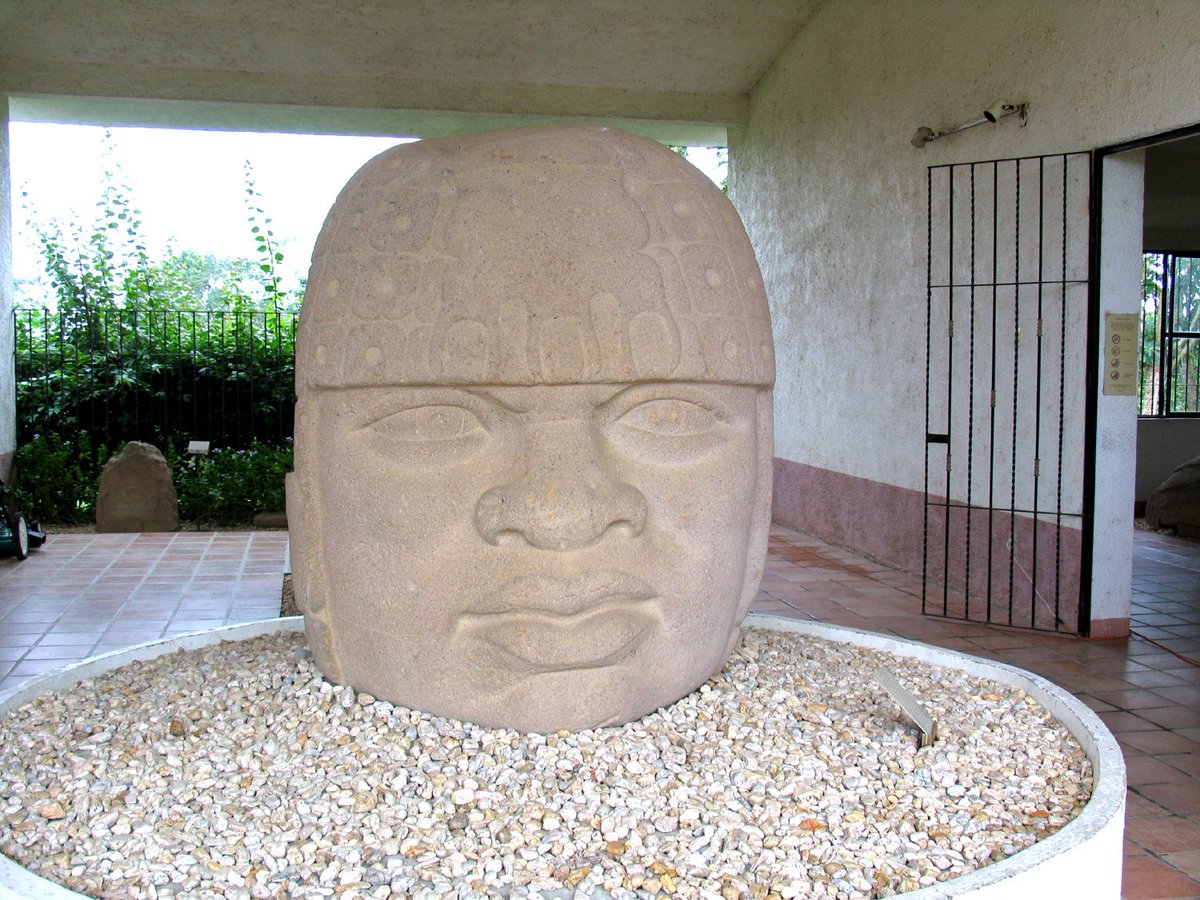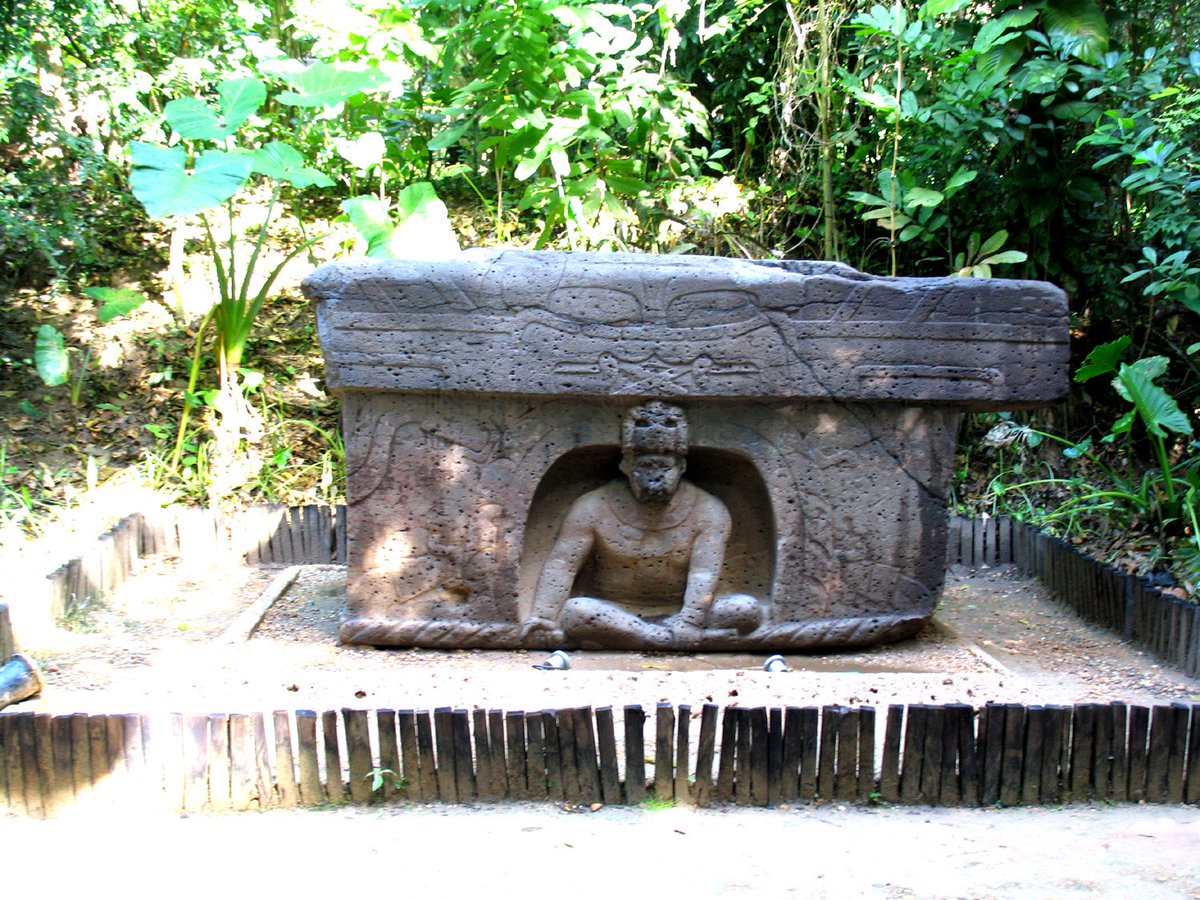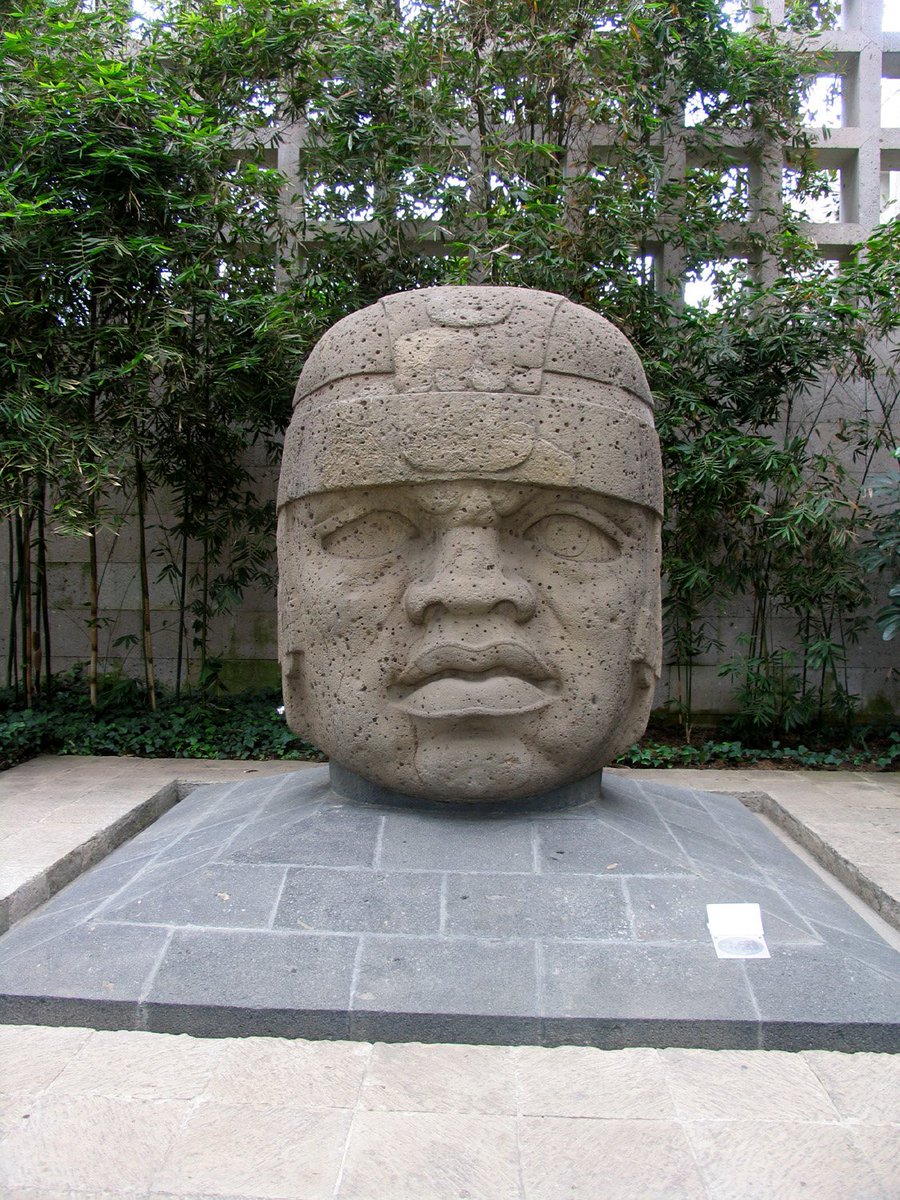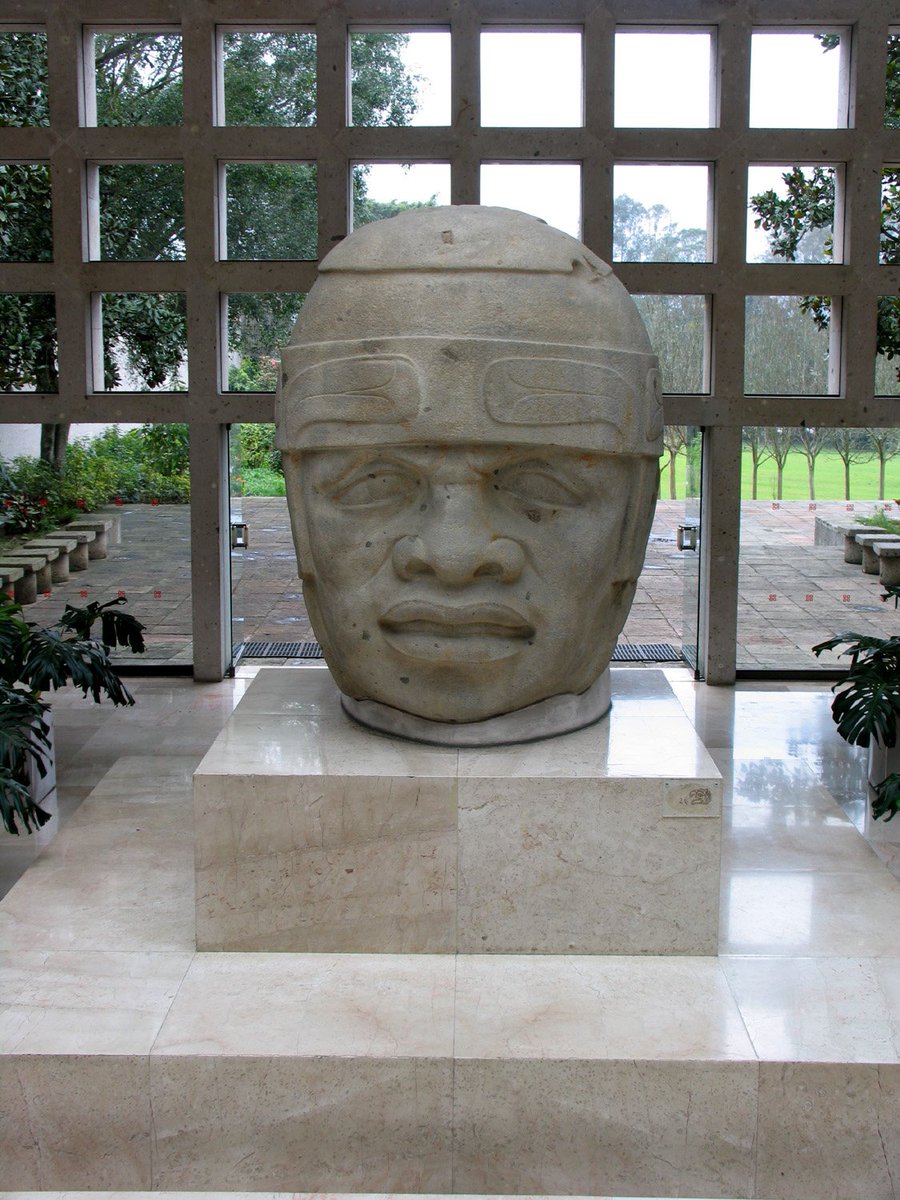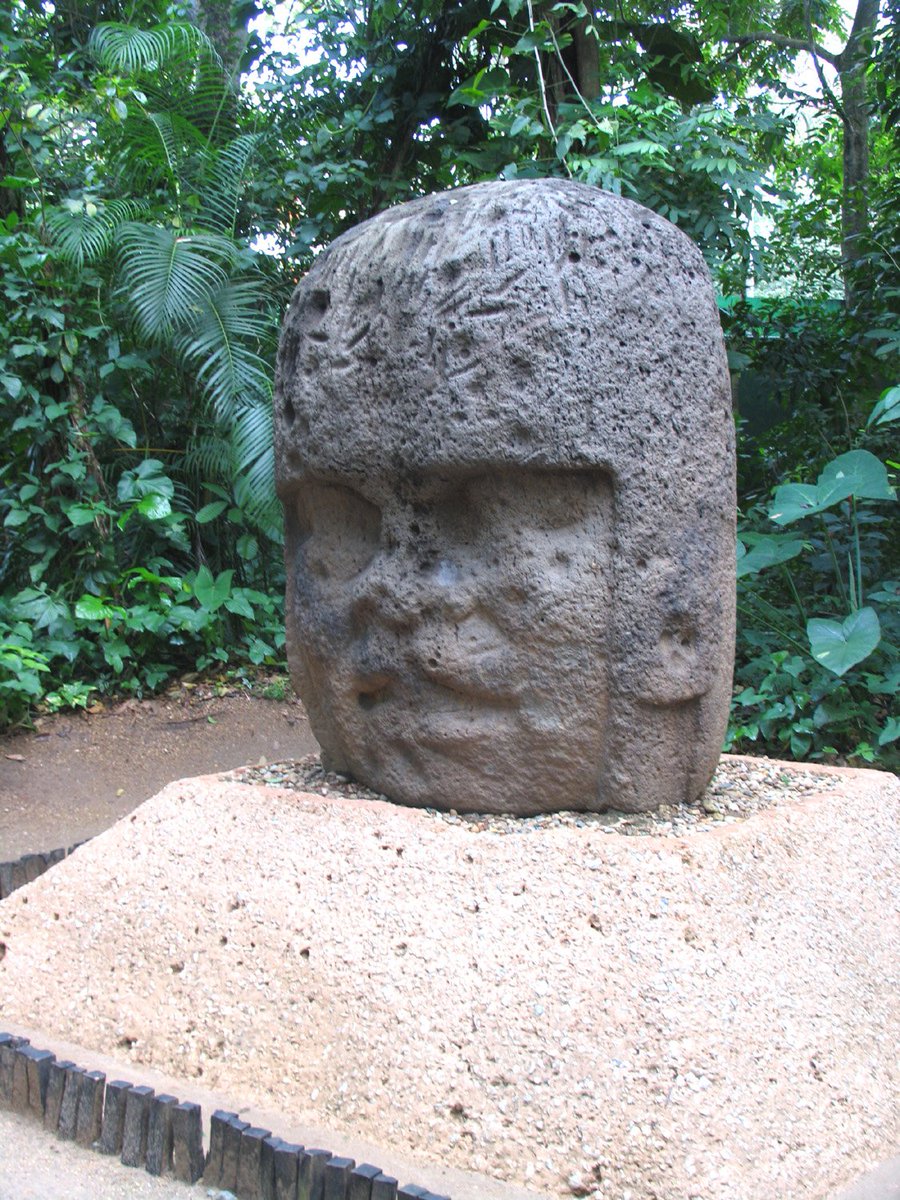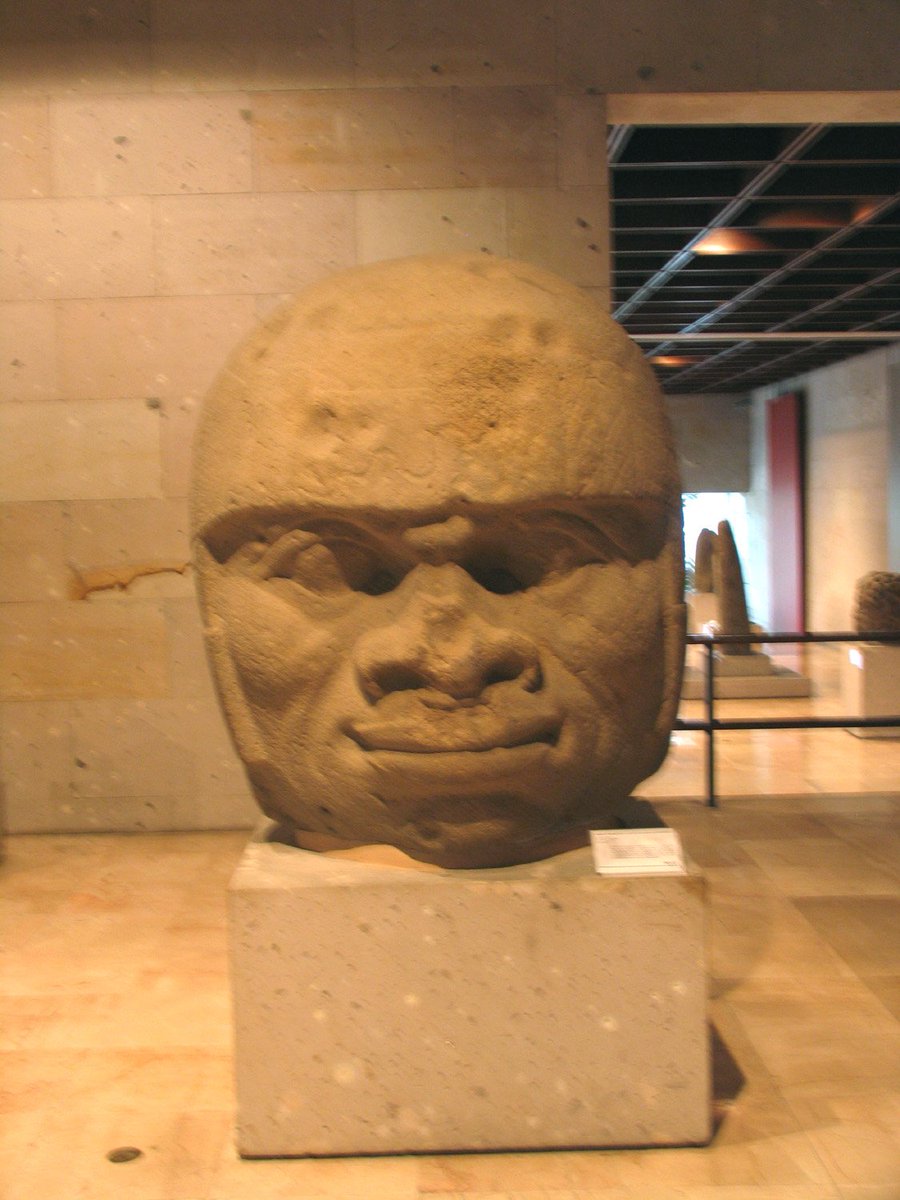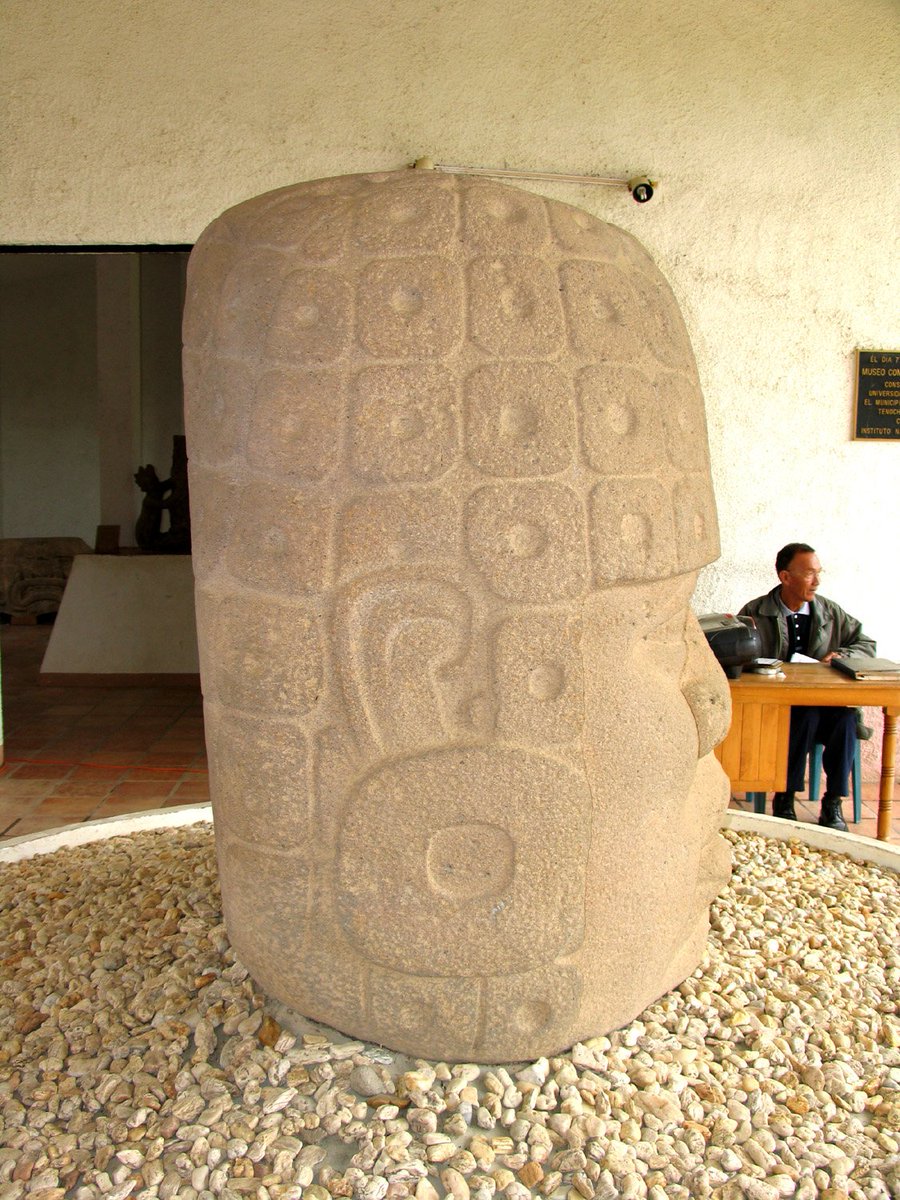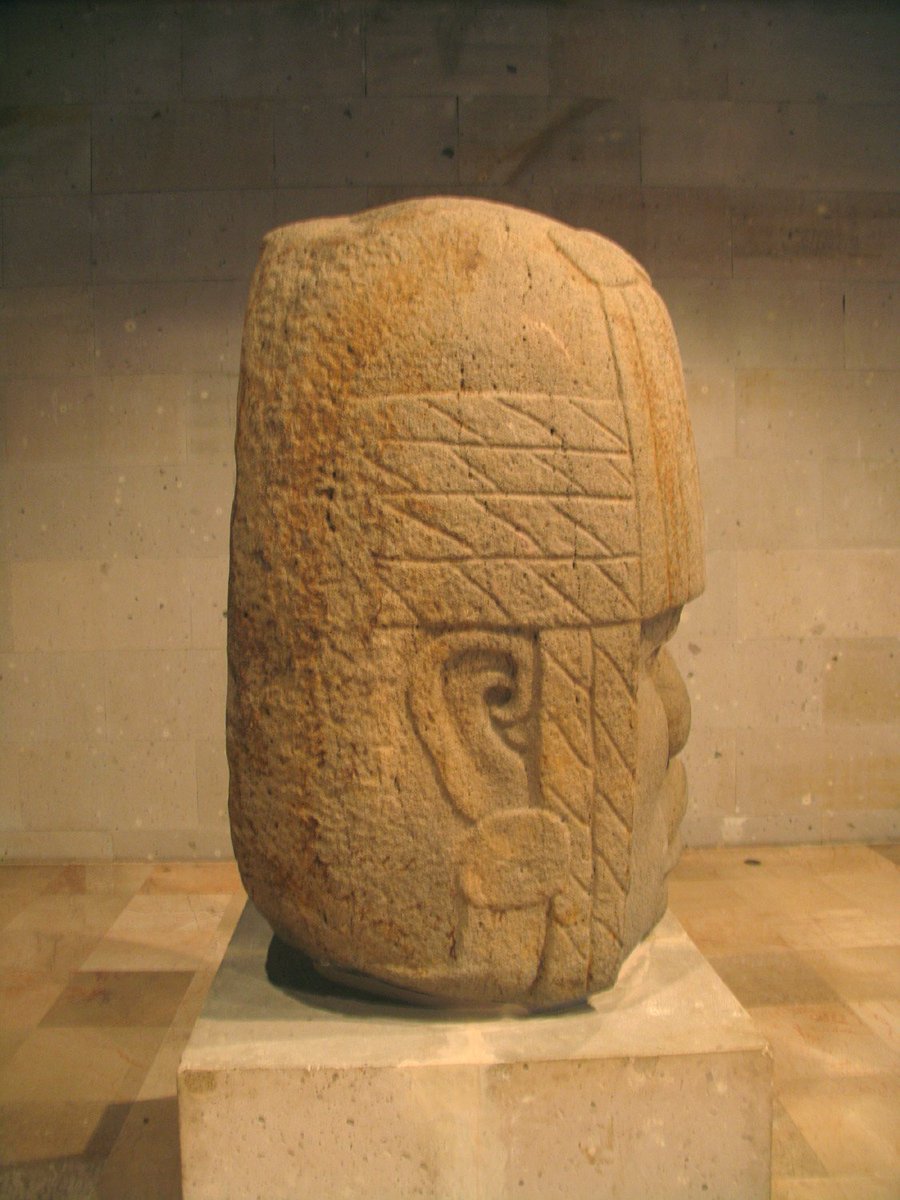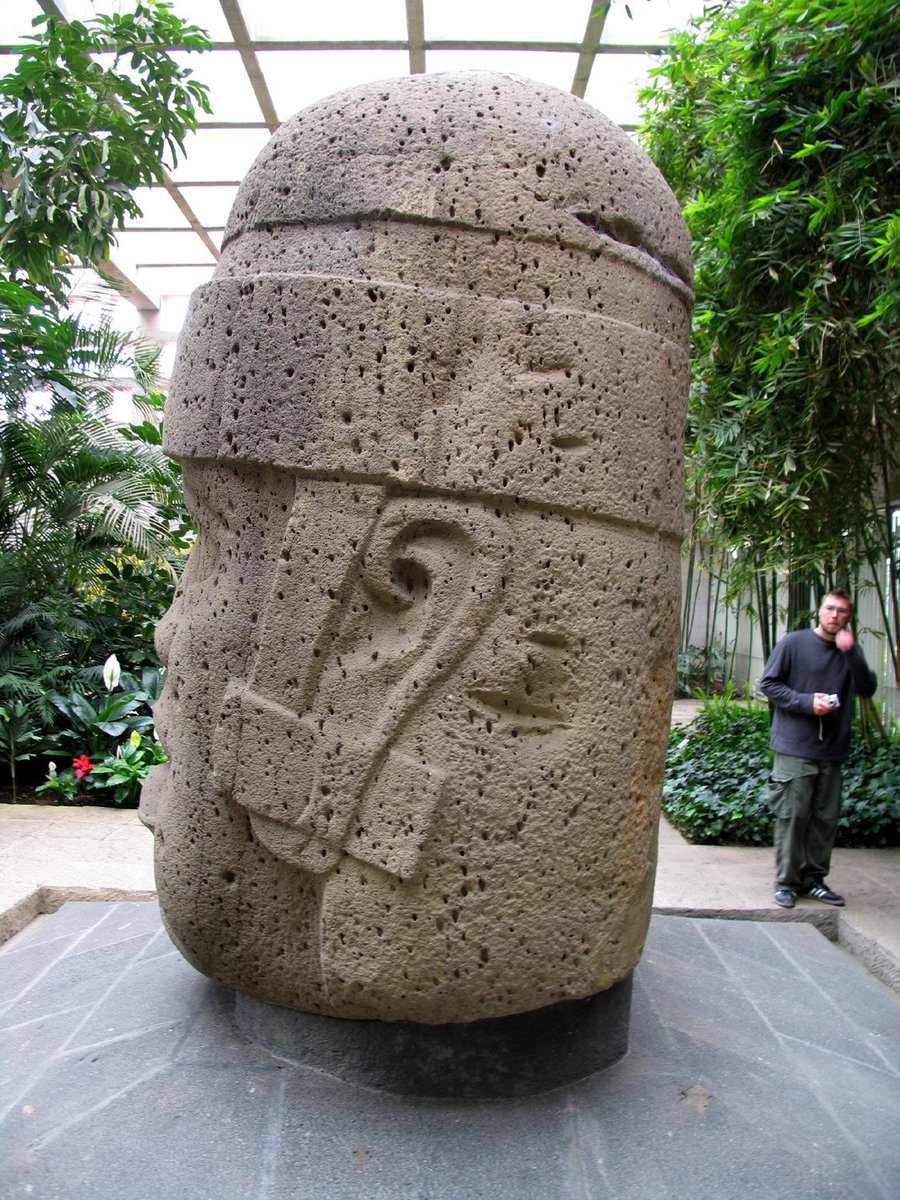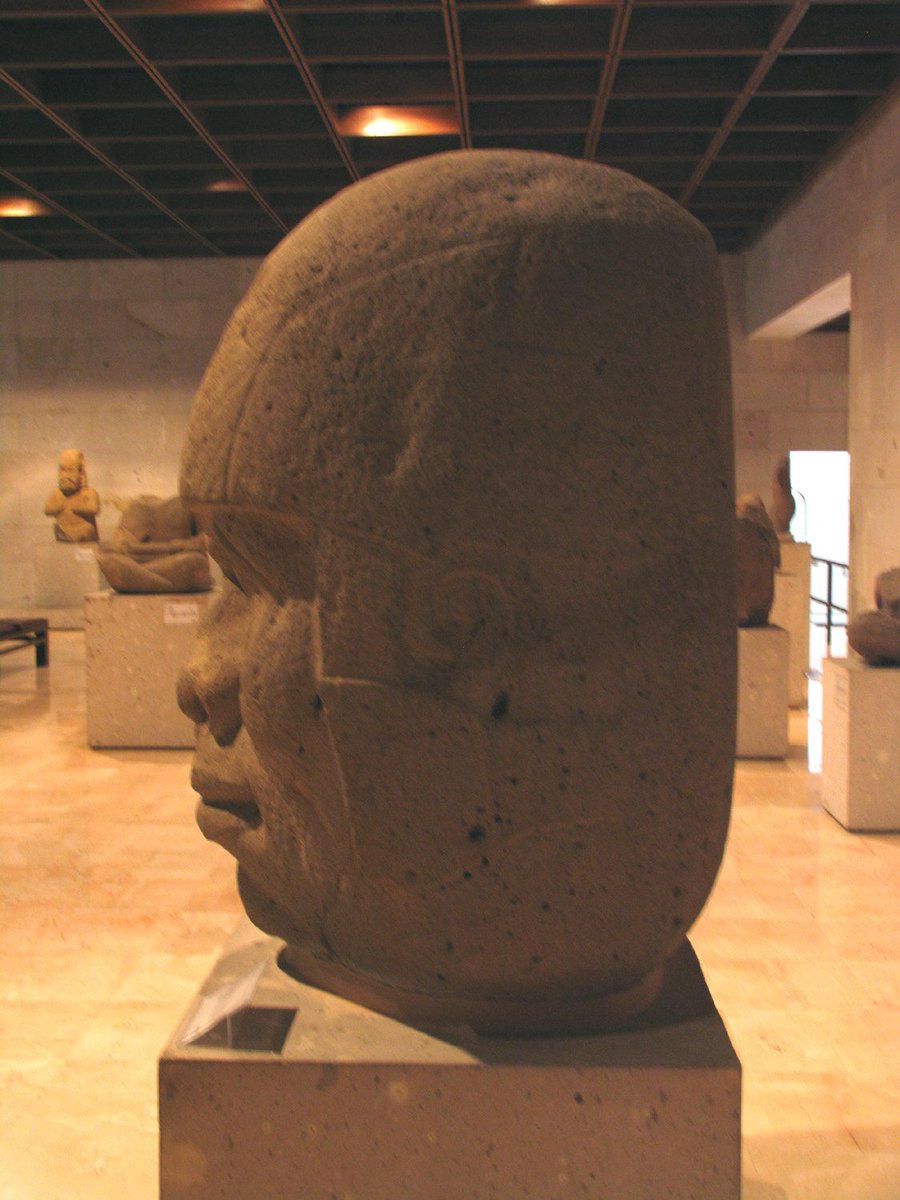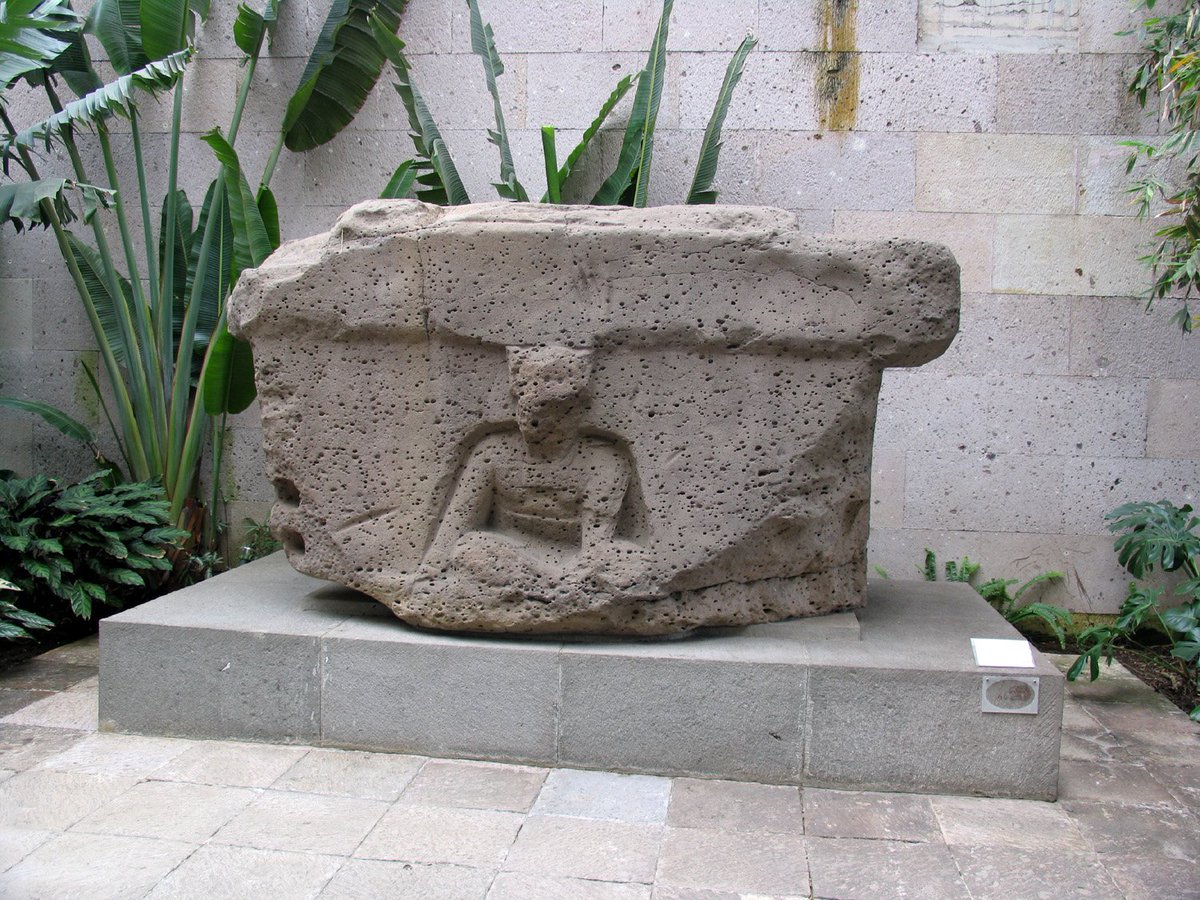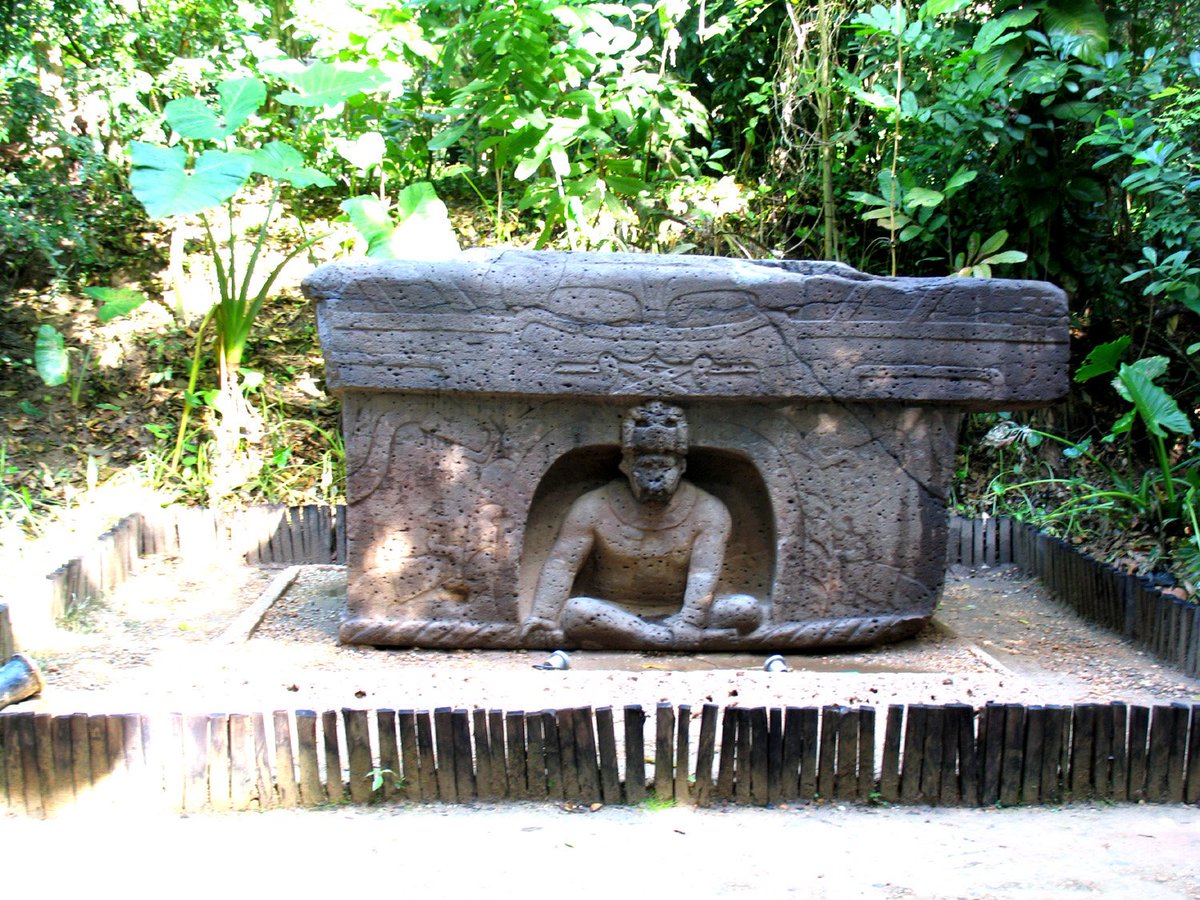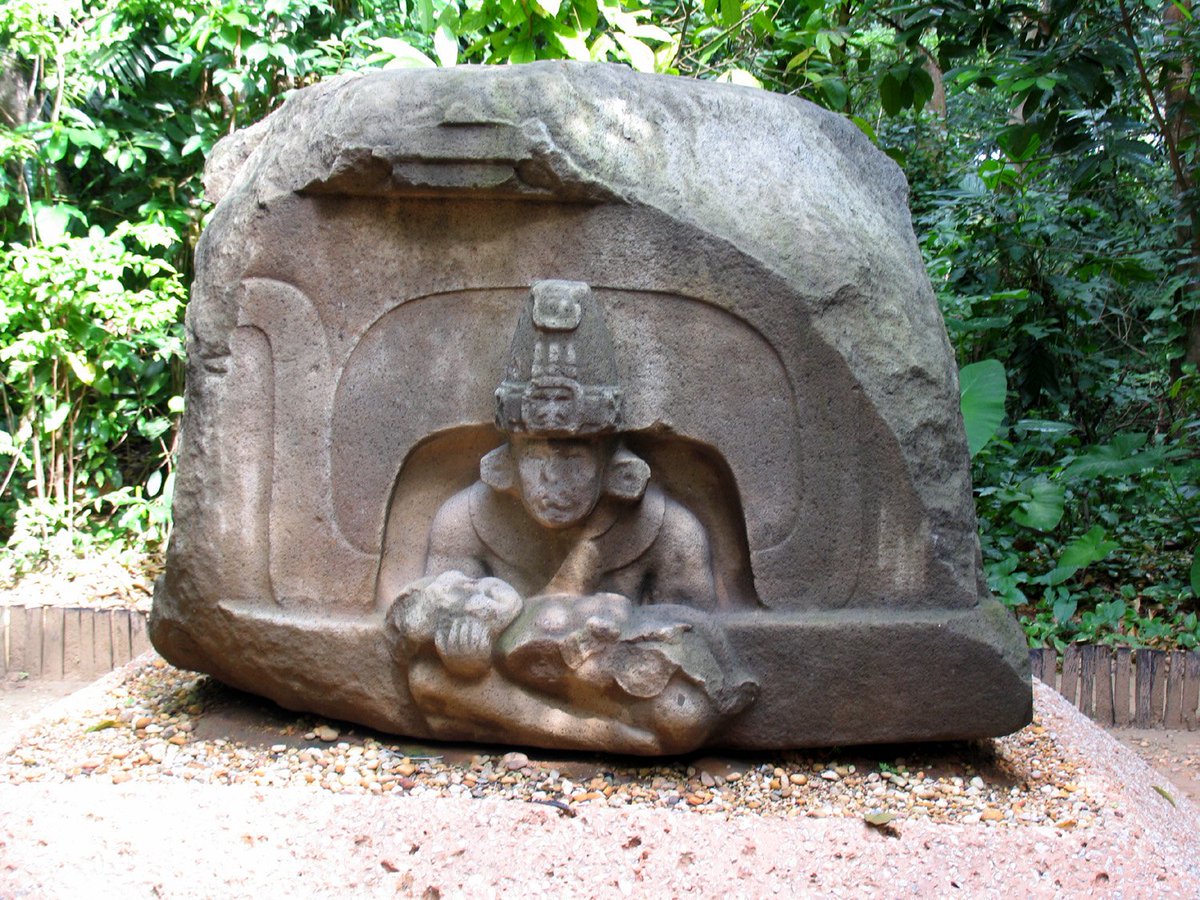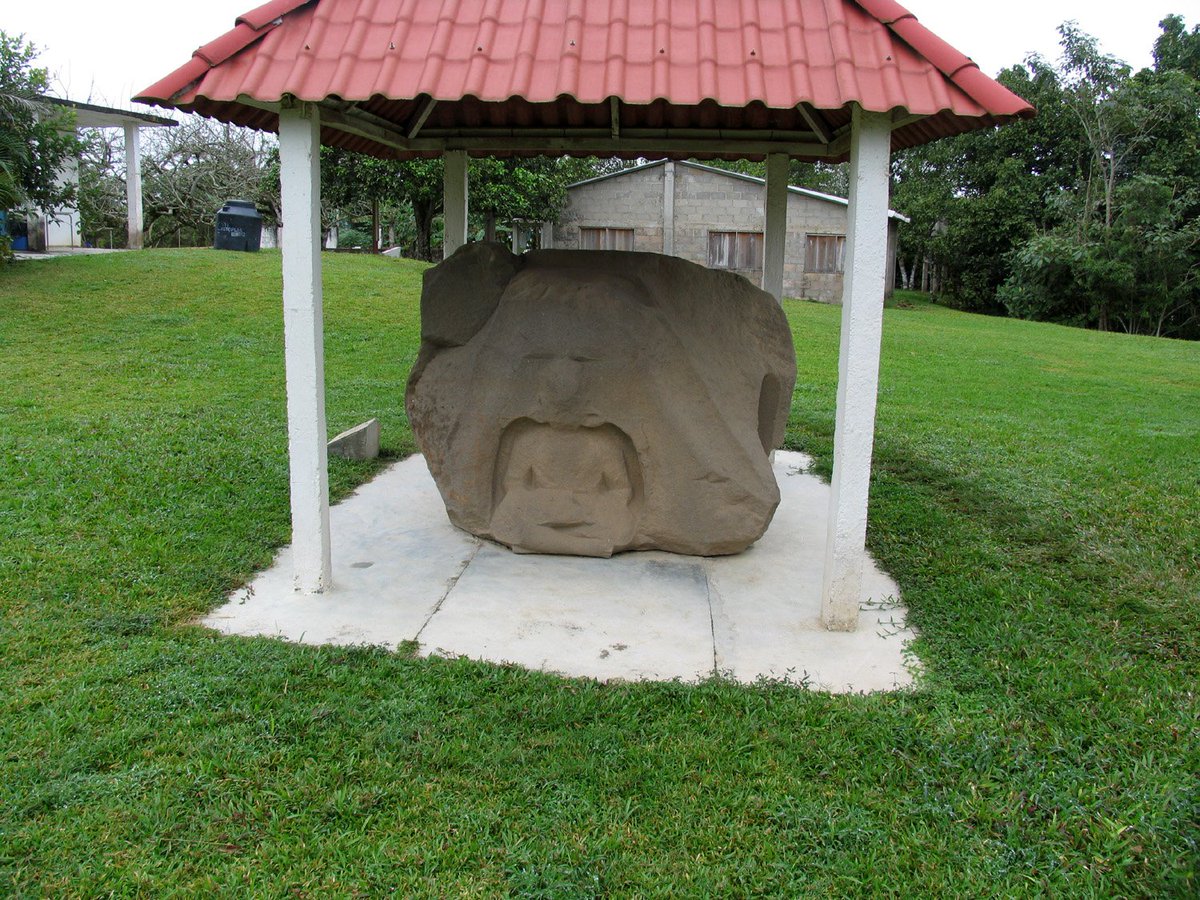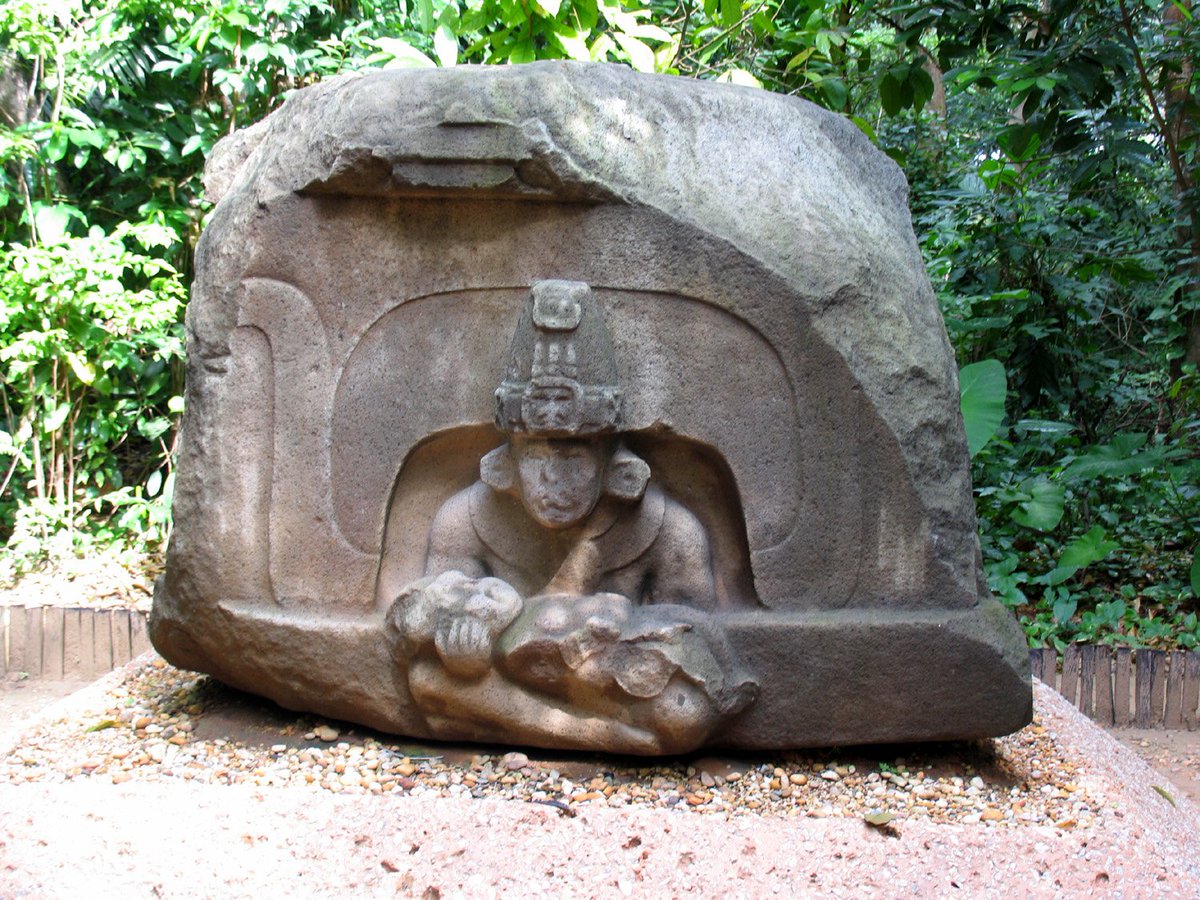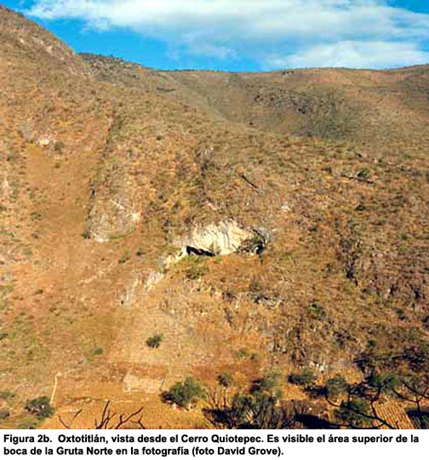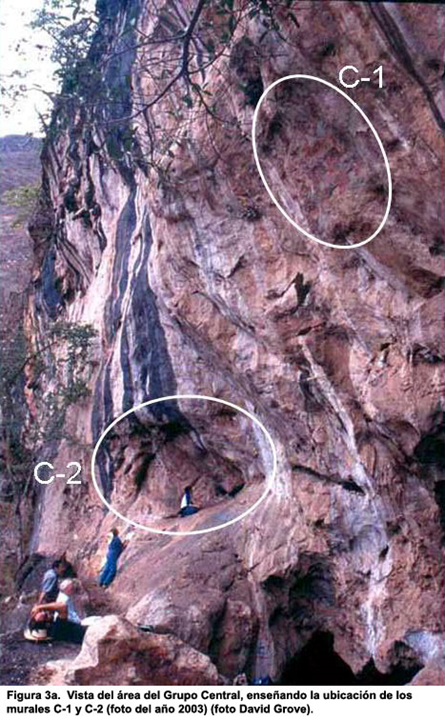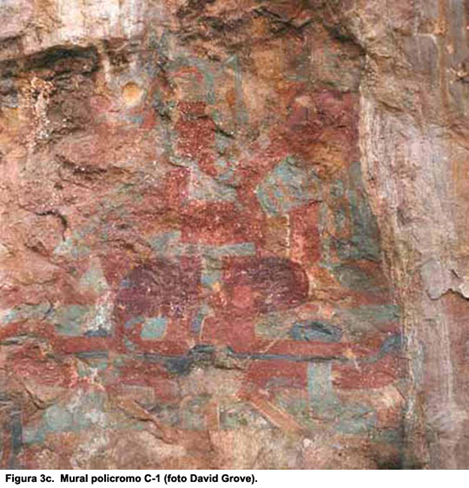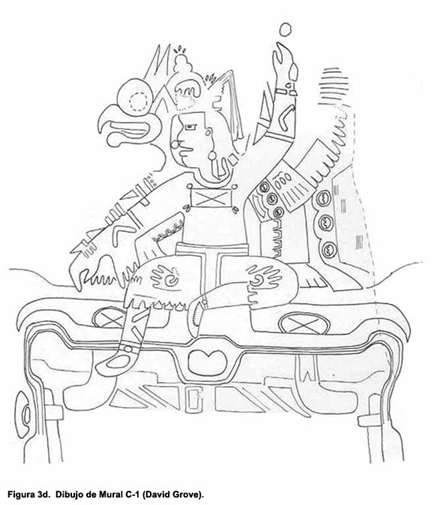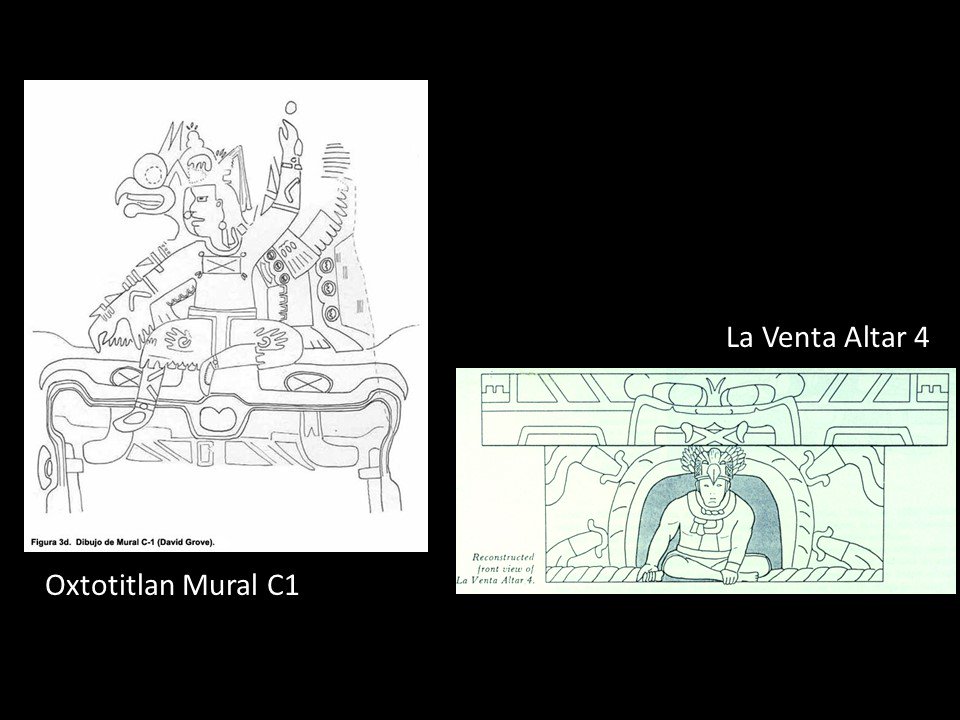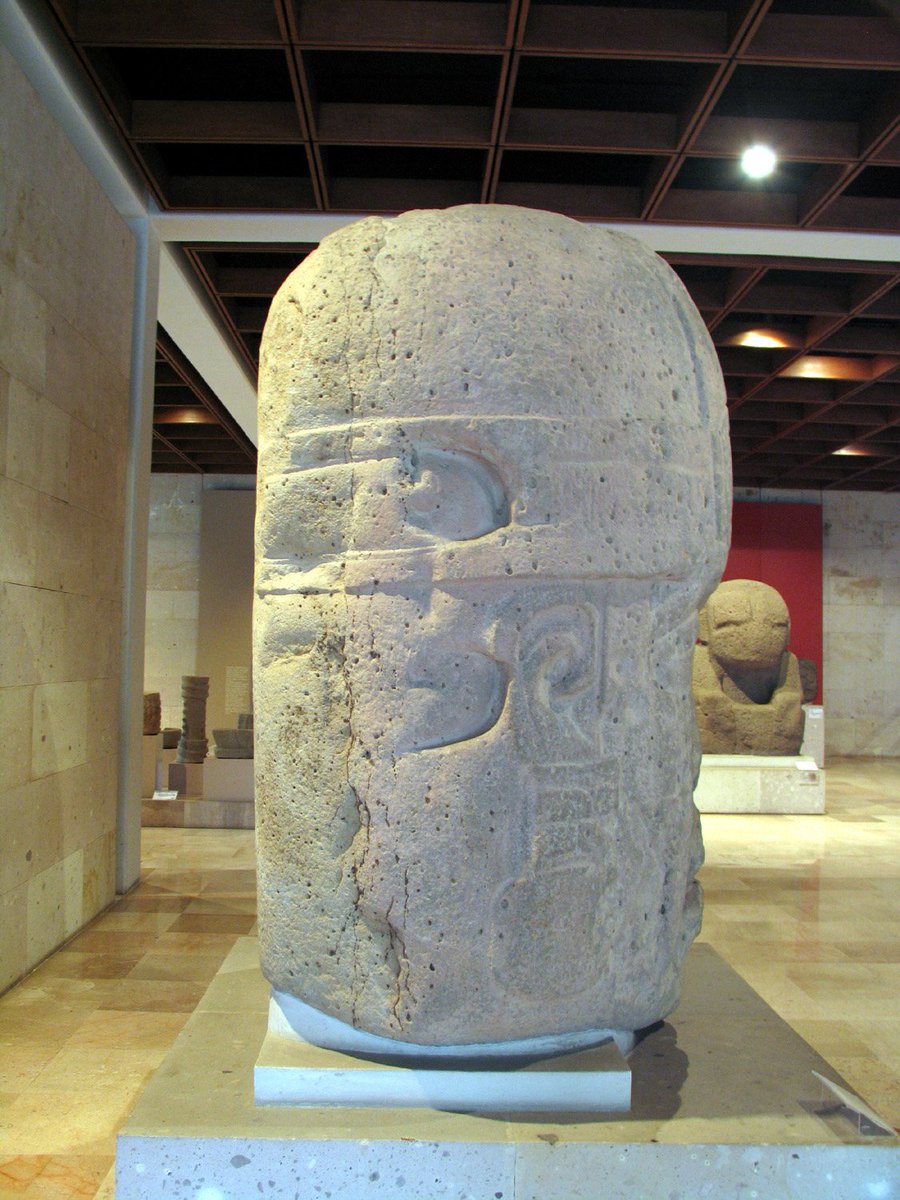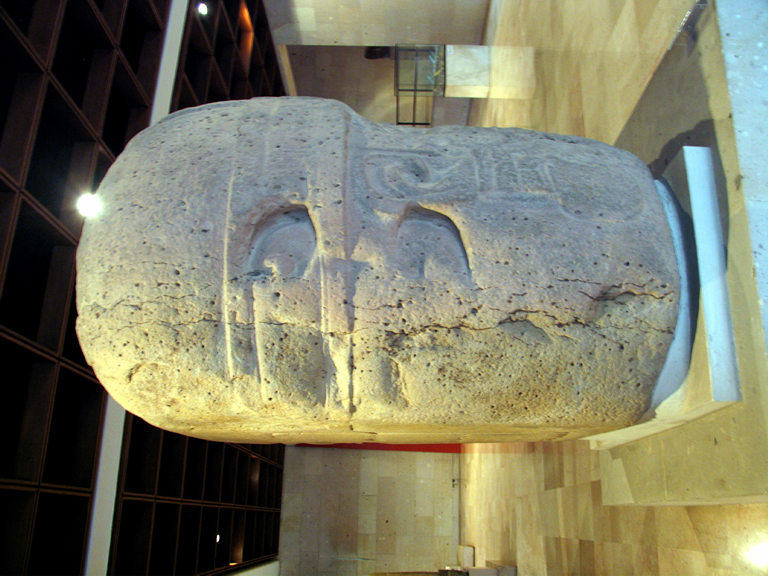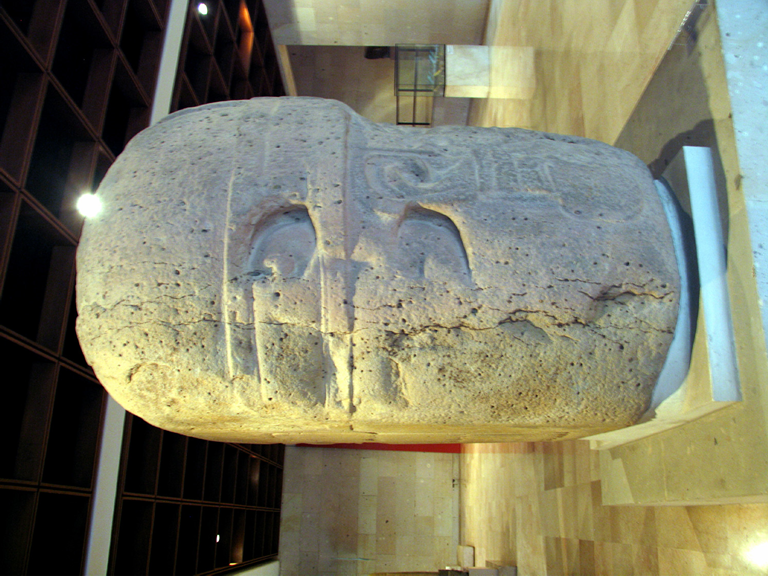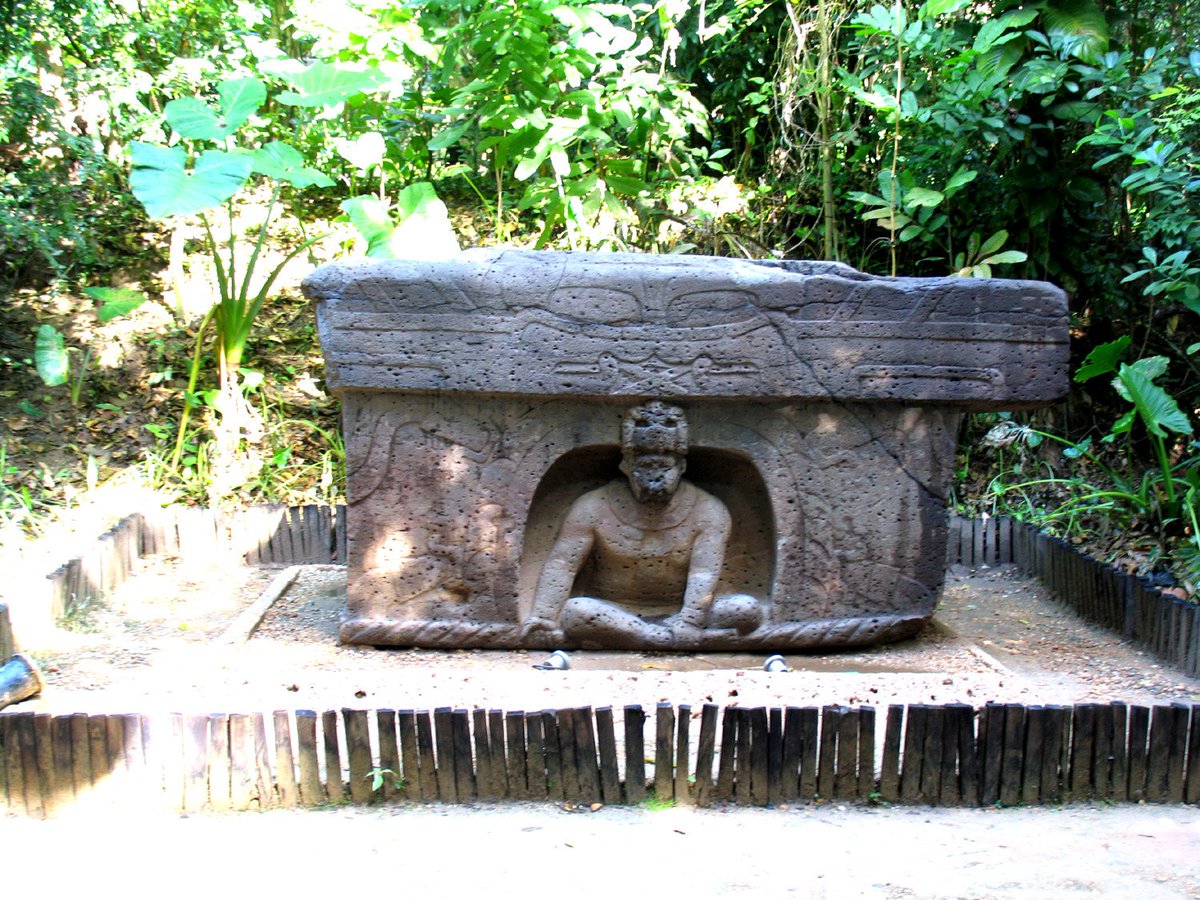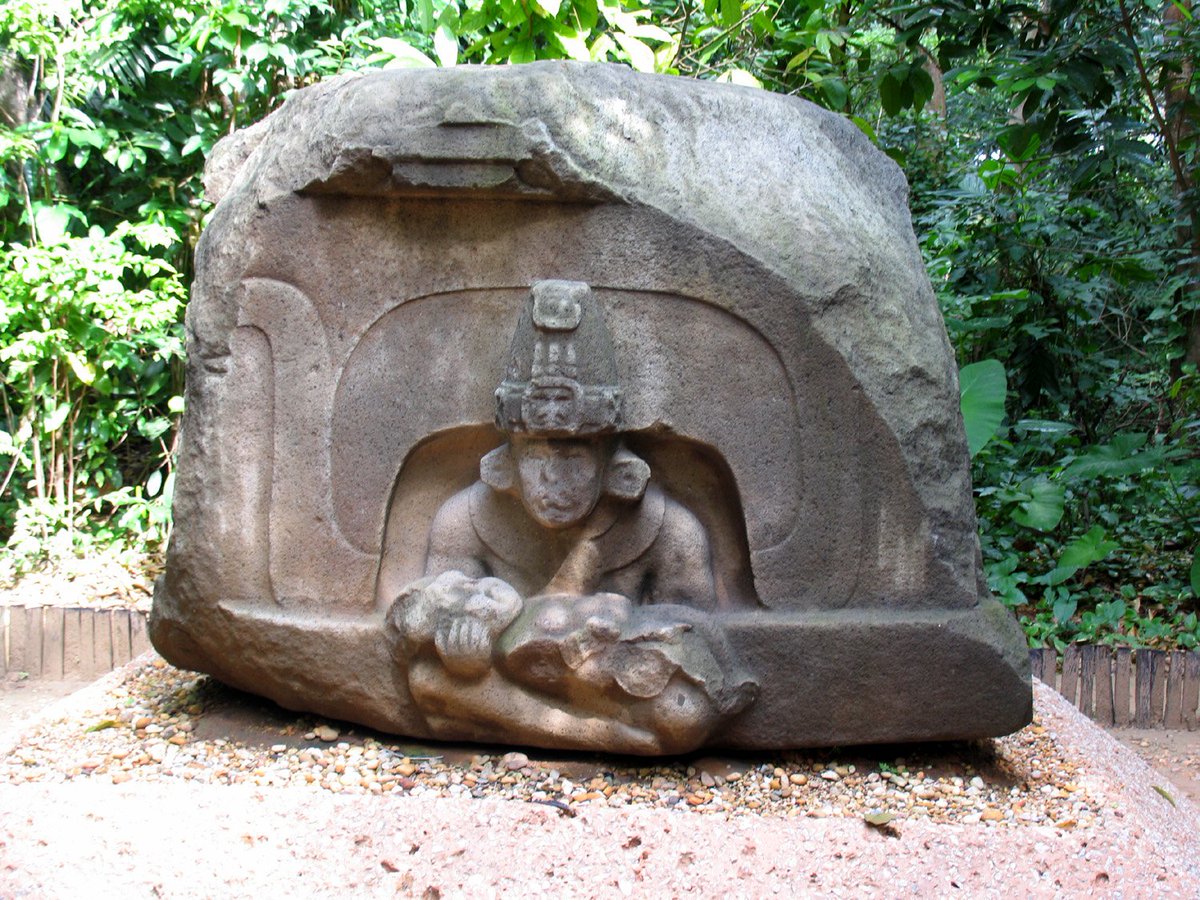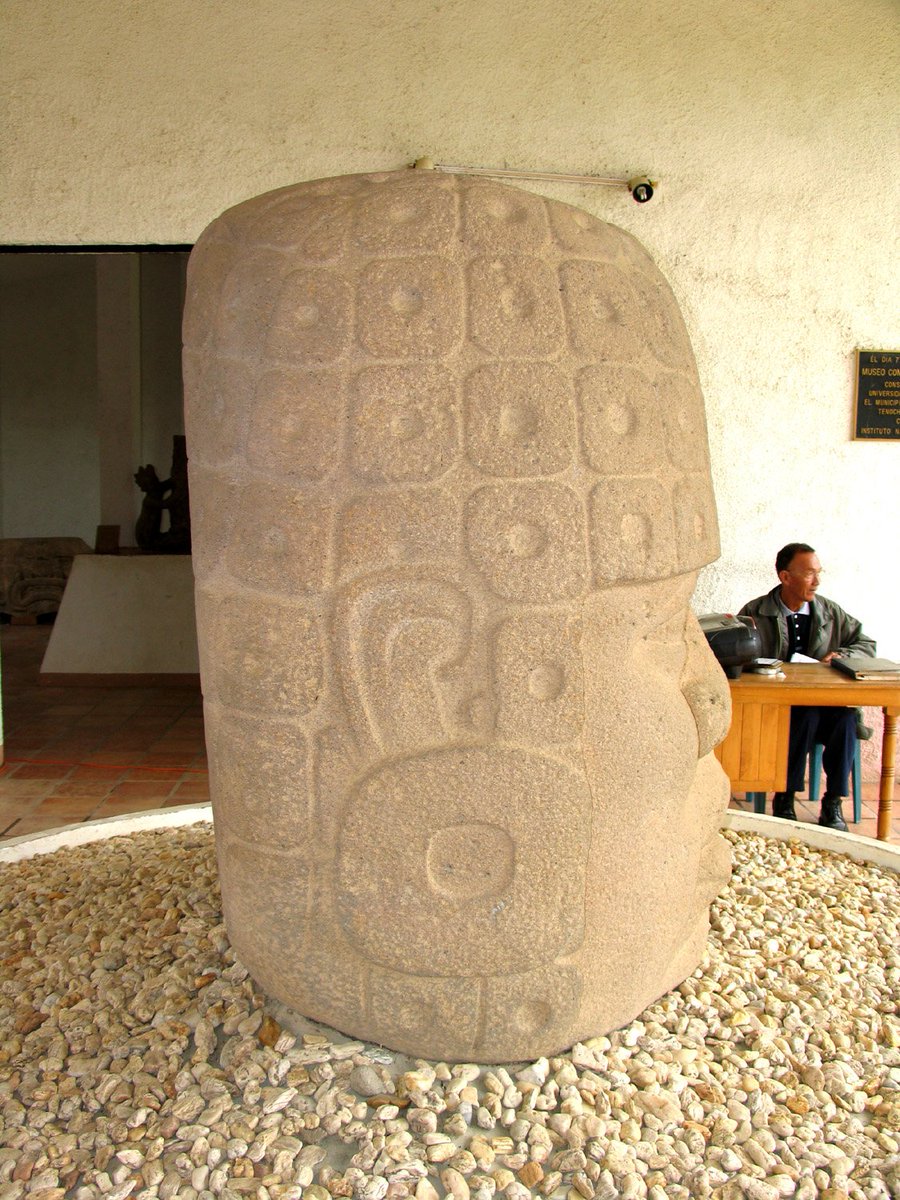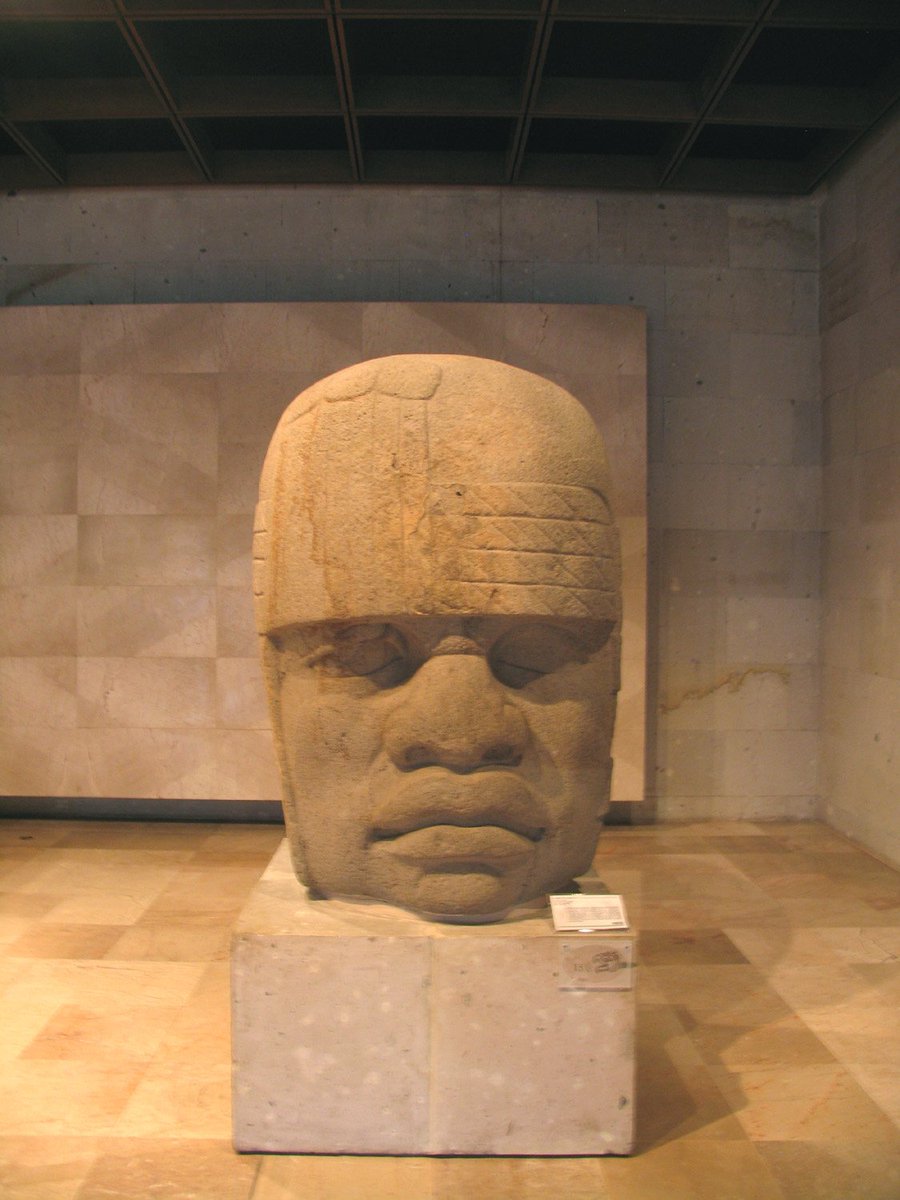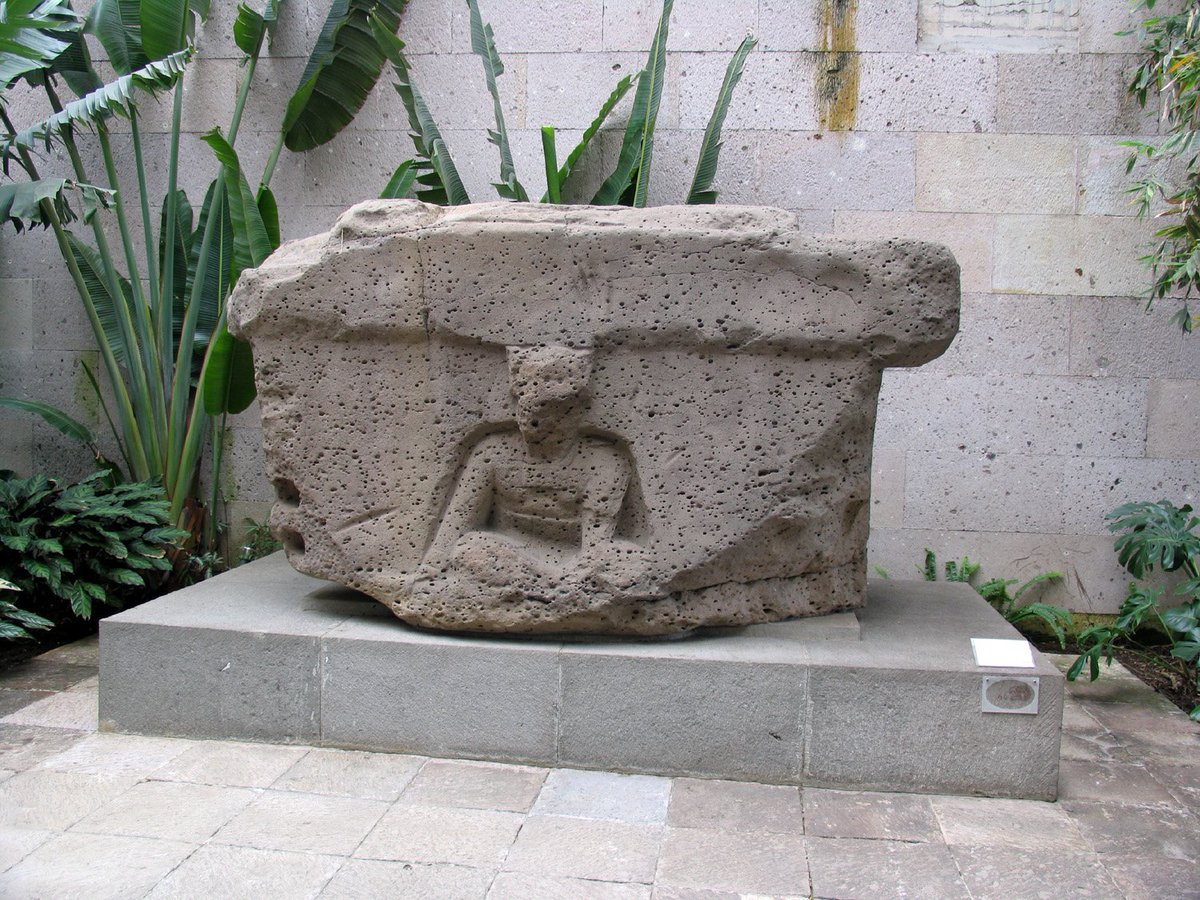The Olmec were a culture that lived in along the southern Gulf Coast of Mexico more than 2,000 years ago.
They are best known for a tradition of monumental sculptures including Colossal Heads & Altars. But did you know there& #39;s a relationship between these sculpture types? 1/13
They are best known for a tradition of monumental sculptures including Colossal Heads & Altars. But did you know there& #39;s a relationship between these sculpture types? 1/13
The Colossal Heads found at the sites of La Venta and San Lorenzo have long stood out as unusual examples of sculpture from Ancient Mexico, since they appear to be portraits. Most carvings of people from these contexts are more generic in their personal expression. 2/13
It had also long been noticed, that the backs of virtually all of the Colossal Heads were particularly flat. Some suggested the heads were carved this way to allow for easier transport, but that explanation never seemed overly satisfying. 3/13
The so called "Altars" also found at La Venta and San Lorenzo, show even more variability then the Colossal heads. But they are united by the inclusion of a "table top" and carvings of a human figure emerging from a niche or cave. 4/13
It was also noticed that many of the "Altars" had been heavily damaged with their corners knocked off. Several scholars proposed the sculptures had been deliberately "mutilated," but opinions were mixed as to why this had happened. 5/13
Two different discoveries in archaeology shifted how we saw these structures & their relationship.
In the 1970s archaeologist David Grove was taken to Oxtotitlan Cave in southern Mexico where a mural was found just above the opening to a large cave system. (photos by Grove) 6/13
In the 1970s archaeologist David Grove was taken to Oxtotitlan Cave in southern Mexico where a mural was found just above the opening to a large cave system. (photos by Grove) 6/13
The mural above the cave appeared to show a man wearing a bird costume seated upon the head of a personified cave "monster."
(Look for the two eyes, marked by x& #39;s, and the out curving fangs beneath them.) (Photo and drawing by Grove) 7/13
(Look for the two eyes, marked by x& #39;s, and the out curving fangs beneath them.) (Photo and drawing by Grove) 7/13
Grove proposed that the scene depicted at Oxtotitlan was analogous to the Olmec "Altars" found at La Venta and San Lorenzo, each of which featured a niche or cave, complete with a "monster" mouth.
And, he argued these Altars were in fact used as thrones by Olmec rulers. 8/13
And, he argued these Altars were in fact used as thrones by Olmec rulers. 8/13
Another piece of the story fell into place in 1989, when graduate student James Porter noticed a strange cut next to the ear of Colossal Head number seven from San Lorenzo. As he stared at the monument, he gradually realized this cut was not random, but deeply significant! 9/13
Let me turn the monument on its flat back!
Take a look again, does that cut behind the ear look familiar? 10/13
Take a look again, does that cut behind the ear look familiar? 10/13
Porter realized that the cut sitting behind the ear of Colossal Head 7 looked just like the remnants of a niche like those found on the Olmec Altars! 11/13
All of a sudden the pieces fell together. The broken off corners from other Altars, the flat backs of the Colossal heads, the personalized features on the same heads, and Groves argument that the "Altars" had actually been thrones. 12/13
All together it appears that Olmec Altars served as thrones for a ruler during their life time. But upon death, the thrones would be broken down and re-carved as portrait statues of the deceased ruler! 13/13
All photos by @DSAArchaeology except where noted!
All photos by @DSAArchaeology except where noted!

 Read on Twitter
Read on Twitter